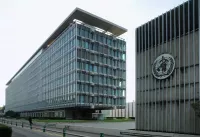Dengue fever, a mosquito-borne viral disease common in tropical and subtropical regions, presents with varying severity. Many infections are asymptomatic or mild. Symptomatic cases, appearing 3-14 days post-infection, involve high fever, headache, vomiting, muscle/joint pain, itching, and rash. Recovery usually occurs within 2-7 days. A small percentage of cases progress to severe dengue, characterized by bleeding, low platelet count, plasma leakage, and dangerously low blood pressure.
1953: First Report of Severe Hemorrhagic Form of Dengue in the Philippines
In 1953, the severe hemorrhagic form of dengue was first reported in the Philippines.
1998: Awareness month in the Philippines
Since 1998, The Philippines has an awareness month in June.
2010: International Anti-Dengue Day agreed upon
In 2010, the idea for International Anti-Dengue Day was first agreed upon.
2010: Increase in dengue cases reported by WHO
The World Health Organization (WHO) recorded a ten-fold increase in dengue cases between 2010 and 2019.
2011: First International Anti-Dengue Day event
In 2011, the first International Anti-Dengue Day event was held in Jakarta, Indonesia.
2012: International Anti-Dengue Day event in Yangon, Myanmar
In 2012, an International Anti-Dengue Day event was held in Yangon, Myanmar.
2013: Global burden of dengue estimated
A study estimated that in 2013 the global burden of dengue amounted to US$8.9 billion.
2013: International Anti-Dengue Day event in Vietnam
In 2013, an International Anti-Dengue Day event was held in Vietnam.
2013: Estimated Dengue Infections
In 2013, approximately 390 million dengue infections occurred, with 500,000 cases developing severe symptoms and 25,000 resulting in death.
2015: Dengvaxia availability
In 2015, Dengvaxia (formerly CYD-TDV) became available and was approved for use in the US, EU, and some Asian and Latin American countries.
2016: Dengvaxia availability
In 2016, Dengvaxia became commercially available, but its use was recommended only for preventing re-infection in individuals previously infected with dengue.
2019: Ongoing efforts to make International Anti-Dengue Day a global event
As of 2019, efforts are ongoing to make International Anti-Dengue Day a global event.
2019: Increase in dengue cases reported by WHO
The World Health Organization (WHO) recorded a ten-fold increase in dengue cases between 2010 and 2019.
December 2022: Qdenga approved for use in the European Union
In December 2022, Qdenga (formerly TAK-003) was approved for use in the European Union after completing clinical trials.
2022: Qdenga availability
In 2022, Qdenga became available and suitable for adults, adolescents, and children from four years of age.
March 2023: Dengue Endemicity
As of March 2023, dengue is endemic in more than 100 countries across nearly every continent, excluding Antarctica.
October 2023: First confirmed symptomatic case of locally acquired dengue in California
In October 2023, the first confirmed symptomatic case of locally acquired dengue in the US was identified in California.
2023: Dengue infections reported worldwide
During 2023, over 5 million dengue infections were reported, accompanied by more than 5,000 dengue-related deaths.
March 2024: Dengue vaccines available
As of March 2024, two vaccines, Dengvaxia and Qdenga, exist to provide protection against dengue infection.
July 2024: No specific antiviral treatment available for dengue fever
As of July 2024, there is no specific antiviral treatment available for dengue fever.
Mentioned in this timeline
Myanmar also known as Burma is a Southeast Asian country...

The World Health Organization WHO is a specialized agency of...
Indonesia is a Southeast Asian and Oceanian country the world's...
Vietnam officially the Socialist Republic of Vietnam is located in...
Trending
1 month ago Frontier Airlines Introduces Changes, New Routes, and Affordable Travel Options for Passengers.

6 months ago Dayana Yastremska advances to Hamburg quarterfinal, her first on clay since 2022.

Justin Trudeau served as the rd Prime Minister of Canada from to He led the Liberal Party of Canada from...

2 months ago Grigor Dimitrov Returns to Tennis at Paris Masters After Wimbledon Retirement

1 month ago Vanessa Hudgens and Cole Tucker Welcome Second Child Into Their Family

1 month ago Earthquake Rattles Northern California on Thanksgiving: Santa Rosa Area Sees 3.3 Magnitude
Popular

Stranger Things created by the Duffer Brothers is a popular...

XXXTentacion born Jahseh Dwayne Ricardo Onfroy was a controversial yet...

Kelsey Grammer is an accomplished American actor producer and singer...

Candace Owens is an American conservative political commentator and author...

Bernie Sanders is a prominent American politician currently serving as...

Marco Rubio is an American politician attorney and diplomat He...
